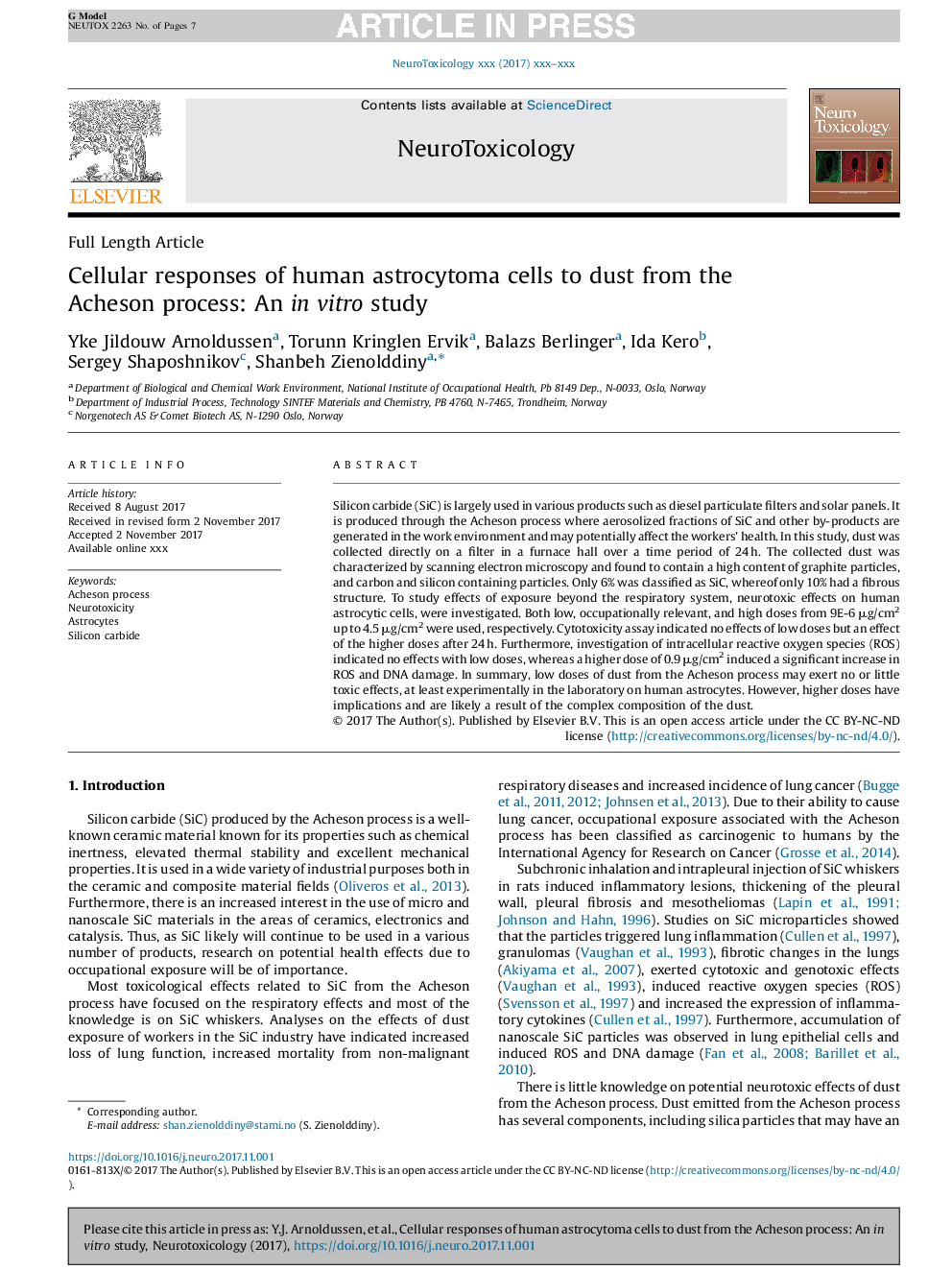| کد مقاله | کد نشریه | سال انتشار | مقاله انگلیسی | نسخه تمام متن |
|---|---|---|---|---|
| 8550258 | 1562029 | 2018 | 7 صفحه PDF | دانلود رایگان |
عنوان انگلیسی مقاله ISI
Cellular responses of human astrocytoma cells to dust from the Acheson process: An in vitro study
دانلود مقاله + سفارش ترجمه
دانلود مقاله ISI انگلیسی
رایگان برای ایرانیان
موضوعات مرتبط
علوم زیستی و بیوفناوری
علوم محیط زیست
بهداشت، سم شناسی و جهش زایی
پیش نمایش صفحه اول مقاله

چکیده انگلیسی
Silicon carbide (SiC) is largely used in various products such as diesel particulate filters and solar panels. It is produced through the Acheson process where aerosolized fractions of SiC and other by-products are generated in the work environment and may potentially affect the workers' health. In this study, dust was collected directly on a filter in a furnace hall over a time period of 24 h. The collected dust was characterized by scanning electron microscopy and found to contain a high content of graphite particles, and carbon and silicon containing particles. Only 6% was classified as SiC, whereof only 10% had a fibrous structure. To study effects of exposure beyond the respiratory system, neurotoxic effects on human astrocytic cells, were investigated. Both low, occupationally relevant, and high doses from 9E-6 μg/cm2 up to 4.5 μg/cm2 were used, respectively. Cytotoxicity assay indicated no effects of low doses but an effect of the higher doses after 24 h. Furthermore, investigation of intracellular reactive oxygen species (ROS) indicated no effects with low doses, whereas a higher dose of 0.9 μg/cm2 induced a significant increase in ROS and DNA damage. In summary, low doses of dust from the Acheson process may exert no or little toxic effects, at least experimentally in the laboratory on human astrocytes. However, higher doses have implications and are likely a result of the complex composition of the dust.
ناشر
Database: Elsevier - ScienceDirect (ساینس دایرکت)
Journal: NeuroToxicology - Volume 65, March 2018, Pages 241-247
Journal: NeuroToxicology - Volume 65, March 2018, Pages 241-247
نویسندگان
Yke Jildouw Arnoldussen, Torunn Kringlen Ervik, Balazs Berlinger, Ida Kero, Sergey Shaposhnikov, Shanbeh Zienolddiny,